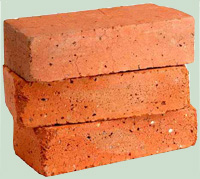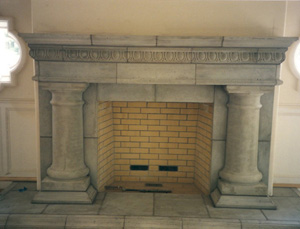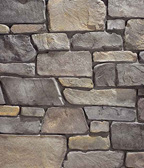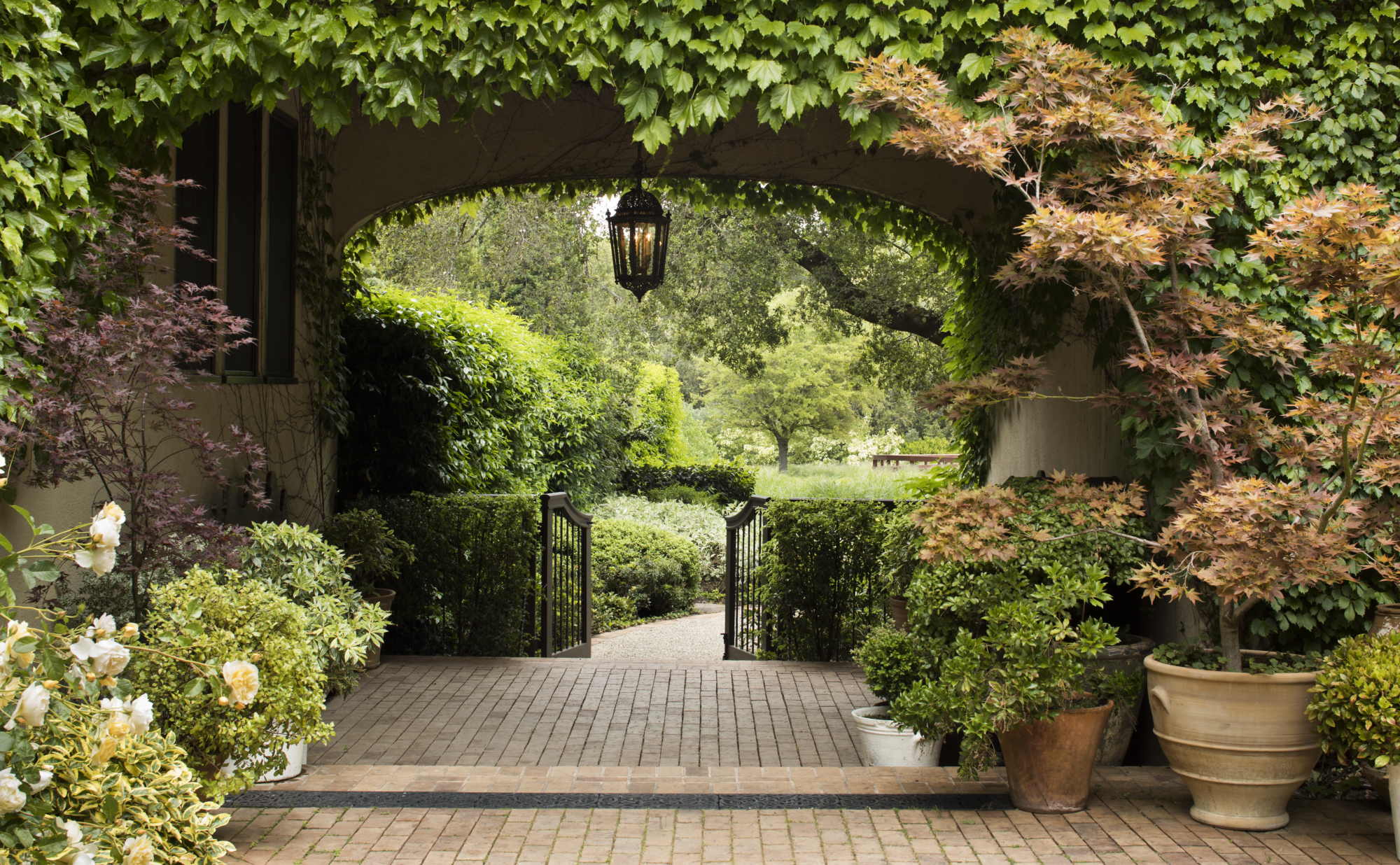Brick

A brick is a small rectangular block typically made of fired or sun-dried clay that is used to build structures or to pave surfaces. Clay brick can be manufactured in a variety of colors and styles from an Old World look to a clean modern design.
You can choose a clay brick with old California colors that are soft and faded or a sand mold brick with soft crumbled edges. You can find modern looking hard-edged brick fired in a variety of colors from dark browns or reds to soft salmon or blues or gray colors. Brick may have a uniform color or each brick may vary with individual streaks of color.
Brick are manufactured in a variety of shapes. In addition to brick for veneer there are brick pavers, thin brick and blocky shapes used in retaining walls. There are firebrick used in fireboxes and molded brick used for coping and steps.
Brick manufactures also make paving stones. They produce a variety of colors and shapes of cobblestones and a variety of cut shapes called Interlocking Pavers that fit together into patterns.
Block
A concrete masonry unit (CMU) – also called concrete block, cement block, and foundation block – is a large, rectangular block used in construction. Concrete blocks are made from cast concrete, i.e. Portland cement and aggregate, usually sand and fine gravel for high-density blocks. Concrete blocks may have hollow centers to reduce weight and improve insolation. The nominal size in inches is 16 x 8 x 8. Block is frequently used for foundation walls and are set in staggered layers. Often rebar is set inside the hollow blocks which are then filled with cement to make a solid, reinforced wall. Above, a tan block wall is used as a decorative facade for a custom home.
The Block category also includes Glass Block. Square units of glass block measure approximately 8” x 8” x 3” and are set for showers, walls, and windows. Glass block now come in a variety of shapes and have a vast array of designs and textu
NATURAL STONE

What is stone? At one time, the definition seemed fairly simple and obvious. For eons, humans have used stones for building materials. Farmers collected fieldstone from the surface of an agricultural property and set them into dry stack walls as property dividers. Homeowners veneered their house with a natural local stone obtained from a local quarry. Gardeners frequently used a soft, flat sedimentary stone called Arizona Flagstone for pathways around the yard.

In geology, a rock is a naturally occurring solid aggregate of one or more minerals. Geologists classify rocks according to characteristics such as mineral and chemical composition, permeability, texture and particle size. To obtain precious stones, rocks are mined to extract minerals. To obtain building stones for construction purposes, rocks are extracted from the ground in a quarry. A famed example is “Barre Gray” Devonian pluton granite quarried at the Rock of Ages Quarry in Barre, VT. Whether mined or quarried, there are three principal classes of rock: Igneous, Sedimentary and Metamorphic.
Precast Architectural Stone
Today, if you venture into a building materials yard, you will discover that stone is no longer simple. A primary but not always obvious fact is the division between Natural Stone and Artificial Stone.
Artificial stone, also known as Cast Stone or Precast Stone is a product that simulates natural cut stone. Cast stone can be made from cements, manufactured or natural sands, crushed stone or natural gravels. A mixture of fine aggregates is consolidated into a mold. They are colored with mineral coloring pigments. Cast stone may replace natural cut limestone, brownstone, sandstone, bluestone, granite, slate, coral rock, travertine and other natural building stones.
Precast Architectural Stone

Cast stone materials have become very sophisticated. They are used to produce architectural structures and ornamental elements. Precast moldings such as an Entry Door Molding or a Wall Trim Molding can look like Old World carved limestone. Precast Balustrades come in a wide variety of complex styles and shapes. There are Fluted or Segmented Precast Columns in styles such as Tuscan or Corinthian. There are fireplace Mantels of all shapes, sizes and finishes and styles. There are Precast Pavers, Stair treads, Wall caps, Planters and Pool Edge Coping. There are Precast Gargoyles, Counters, Range Hoods, Table Bases, Lintels, Corbels and Finials. Precast molds are also used for commercial buildings and for restoration work.
Manufactured Stone Veneer
Precast molds are also made to duplicate natural cut stone. Dimensional Stone reproduces cut stone and is available in all dimensions from thick blocks to flat strips. They may be long and narrow or square and they are formed to serve all requirements for building materials from walls to pavers to veneers.

This artificial stone became popular as an inexpensive substitute for real stone. Like precast stone it is made with lightweight cement in a mold. This material is commonly referred to as “stucco stone” because it is set against sticky paper with stucco instead of being set with mortar. Stucco Stone products include Hearthstone, Ledgestone, Rubblestone, Fieldstone and rounded River Rock or Stream Stone. Stones shaped in blocks, strips and squares with the look of limestone or other types of stone are also available to be laid in a Random Ashlar Pattern.
